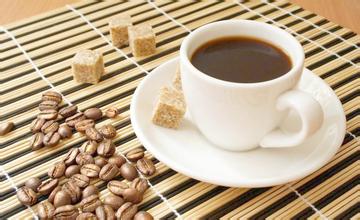Puerto Rico la resyoko coffee flavor taste estate boutique coffee beans characteristics
On September 23, 1869, the people of Puerto Rico, led by R. Emétrio Betancés, staged an uprising in the town of La Rez (known as the "La Rez Voice"). On September 24, they declared the establishment of a republic, which was suppressed by Spanish colonial forces. After a long struggle, Puerto Rico was finally granted the right to local autonomy by Spain. However, only one year elapsed between this time and the island becoming an American colony after the Spanish-American War. [4]
In 1898 the Spanish-American War broke out and Spain was defeated. According to the Treaty of Paris, Puerto Rico was ceded to the United States. The administrative authority of the United States over Puerto Rico first took the form of a military government. During its two years of rule over the island, the military government built schools, roads, railways, hospitals and health facilities. In 1900, the United States Congress established civilian control over the island. The President of the United States appoints the Governor, Cabinet and one of the two houses of Puerto Rico's legislature. Puerto Rico elects the other house of the legislature and a capital-based commissioner who will represent the island's interests in Washington and have a voice but no vote in Congress. Puerto Rico people are also exempt from paying U.S. taxes. In 1977, U.S. President Gerald R. Ford submitted the Puerto Rico Statehood Act of 1977 to Congress, advocating that Puerto Rico become the 51st state of the United States.
In November 1982, President Ronald Reagan issued a statement supporting statehood for Puerto Rico.
In November 1993, Puerto Rico held another referendum on its relationship with the United States, with a majority still favouring the maintenance of free commonwealth status.
On November 6, 2012, Puerto Rico held a fourth referendum. The referendum consisted of two rounds of voting. In the first round, Puerto Rico voted on whether they wanted to change the status quo in their relationship with the United States. 1.8 million people were eligible to vote, 65,000 abstained from the first round of voting, and 54 percent of those who voted supported a change of relationship. Puerto Rico then had a choice about how to make the change, with voters choosing between statehood, extended autonomy and full independence. Only 1.3 million people cast ballots in this round, with 61 percent supporting statehood as the 51st state, about 33 percent wanting expanded autonomy, and just 5 percent favoring full independence.
In Spanish, Puerto Rico means "port of affluence." Coffee in Puerto Rico dates back to 1736, when early Spanish immigrants brought coffee seedlings. Since the main cash crop was sugar cane in the 18th century, it has not been valued. In the early 19th century, French immigrants began to migrate from the Mediterranean island of Corsica to Puerto Rico because of European political factors. Crowded by the Spanish, many French settled in Yauco, southwest of Puerto Rico. Yaoko's geographical environment is more hilly, so the French decided to grow coffee. After half a century of hard work, the quality has been recognized by the market and has established the position of Yauco Selecto coffee in the future.
In the 1960s, coffee produced in Puerto Rico's Yaoko region won the reputation of premium coffee throughout Europe. At that time, the emperors and queens of various countries regarded it as the best coffee, and many kings and queens of various countries and European popes only recognized Yao Ke coffee when choosing coffee. And for the Holy See designated to drink the royal coffee Puerto Rico coffee beans carefully planted, taste pure, aromatic, heavy particles, of which the best coffee is Yao Ke selected (Yauco Selecto),"Selecto" means "selected." Grown only on three farms in the south-west of the island, San Pedro, Caracolillo and La Juanita, Yocote Coffee has a strong aroma and a long aftertaste, making it a true premium coffee. The hilly areas southwest of Puerto Rico have mild climates, long maturity periods (October to February), and good clay soils. The people here have been using an eco-friendly, intensive cultivation method, picking only fully ripe beans and then rinsing them in a roller for 48 hours. Yocote Select coffee beans are kept in sheepskin shells until they are marketed and removed when ordered to ensure optimum freshness. U.S. government officials, such as the FDA and USEA, are present at the time of the transaction to monitor compliance with federal regulations. There are also professional reviewers who randomly sample one bag from every 50 bags of coffee and use international gauges to evaluate the quality of the coffee beans, all to ensure that the real Yocote Coffee is a good deal.

Important Notice :
前街咖啡 FrontStreet Coffee has moved to new addredd:
FrontStreet Coffee Address: 315,Donghua East Road,GuangZhou
Tel:020 38364473
- Prev

Sumatran Lindong style Sumatran Lindong Coffee
The famous coffee producing areas in Sumatra are GAYO Mountain area (that is, Aceh producing area), Lintong (Lindong producing area) and Sidikalang (Western Garang). The beans in the GAYO Mountains are now the best in Sumatra, mostly grown in old trees, at high elevations, between 1500 and 2500. This producing area is located in ACEH, the place where the great tsunami occurred, after the tsunami.
- Next

Costa Rican Coffee Manor Costa Rican Coffee beans flavour Costa Rica Coffee producing area
Coffee is an important economic source of Costa Rica. It was introduced in 1808 and has been cultivated for 200 years. Costa Rica has 1x3 population invested in coffee-related industries. Colombians say that coffee has changed the country and enjoyed a rich environment, and coffee has indeed made an outstanding contribution. Although Costa Rica ranks third from the bottom in terms of land area in Central America, the economic environment is better than half.
Related
- Detailed explanation of Jadeite planting Land in Panamanian Jadeite Manor introduction to the grading system of Jadeite competitive bidding, Red bid, Green bid and Rose Summer
- Story of Coffee planting in Brenka region of Costa Rica Stonehenge Manor anaerobic heavy honey treatment of flavor mouth
- What's on the barrel of Blue Mountain Coffee beans?
- Can American coffee also pull flowers? How to use hot American style to pull out a good-looking pattern?
- Can you make a cold extract with coffee beans? What is the right proportion for cold-extracted coffee formula?
- Indonesian PWN Gold Mandrine Coffee Origin Features Flavor How to Chong? Mandolin coffee is American.
- A brief introduction to the flavor characteristics of Brazilian yellow bourbon coffee beans
- What is the effect of different water quality on the flavor of cold-extracted coffee? What kind of water is best for brewing coffee?
- Why do you think of Rose Summer whenever you mention Panamanian coffee?
- Introduction to the characteristics of authentic blue mountain coffee bean producing areas? What is the CIB Coffee Authority in Jamaica?

